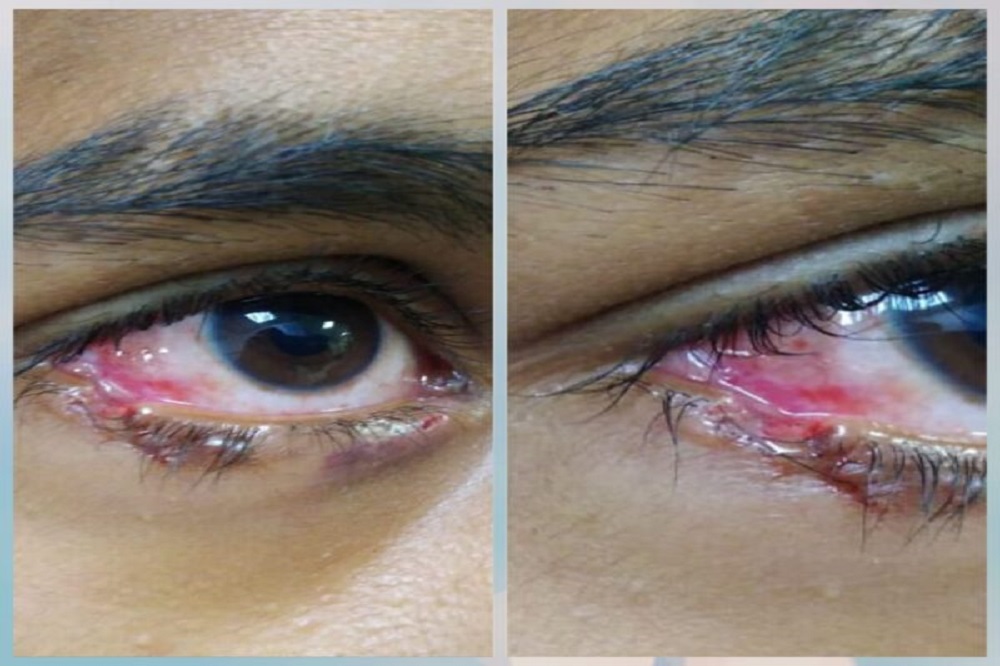
Ever bumped your eye and worried about the damage? Eye injuries, big or small, can be scary. But don’t fret, VIEW CARE eye care center is here to help and educate! Today, let’s talk about eyelid trauma and how reconstructive surgery can restore both your vision and your cosmetic looks.
Read more: Non-Surgical Eye Rejuvenation: Look Younger and Feel Better Without Surgery!
Eye Injuries
Eye trauma can be anything from a minor scratch to a serious blow. It can happen during sports, accidents, or even everyday mishaps. Common injuries include scratched corneas, broken bones around the eye (orbital fractures), and cuts in the eyelid (lid lacerations).
Read more: Keeping Your Eyes Safe at Home: A Guide for Healthy Vision
Reconstructive Surgery: Your Path to Recovery
If you’ve suffered eyelid trauma, reconstructive surgery can be a lifesaver. It’s not just about vanity; this surgery can:
- Restoring Function: Trauma can impair vision and the movement of the eyelids. Reconstructive surgery aims to restore these functions.
- Improve Your Appearance: Eye injuries can leave scars or make your eyelids droop. Surgery can reconstruct your eyelids for a natural-looking result.
- Prevent Future Problems: Left untreated, eye trauma can lead to infections, pain, and even worse vision loss. Reconstructive surgery can prevent these complications.
Lid Reconstruction: Giving Your Eyes a Helping Hand
Your eyelids are like superheroes for your eyes, protecting them, keeping them moist, and helping you see well. When they’re injured, lid reconstruction can come to the rescue. Here are some common types:
- Simple Stitches (Primary Closure): For minor cuts, a few stitches can do the trick.

- Skin Grafts: For larger tears, skin from another part of your body can be used to patch things up.
- Flap Surgery: A healthy tissue from nearby is moved to cover the damaged area.
- Canthoplasty: This rebuilds the corner of your eyelids for better function and appearance.
Why Choose an Oculoplastic Surgeon?
For the best results, trust an oculoplastic surgeon. They’re eye specialists trained in delicate procedures around the eyelids and structures. Their expertise is crucial for successful lid reconstructions. They ensure that the delicate balance between function and appearance is maintained.
Read more:Understanding Oculoplasty: A Guide to Eyelid, Tear Duct, and Orbital Specialists
The Cosmetic Importance of Lid Reconstruction
Reconstructive surgery isn’t just about fixing damage; it’s about helping you feel like yourself again. Here’s how:
- Facial Symmetry: Our eyes are a big part of facial symmetry. Reconstructive surgery after eyelid injury can make sure both eyes look even and natural.
- Boosting Self-Esteem: After an injury, it’s normal to feel self-conscious. Lid reconstruction can restore a more natural look, helping patients regain their confidence and improve their quality of life.
- Better Social Interactions: Our expressions say a lot. Reconstructive surgery can help you show your emotions naturally, improving your social life.
Potential Complications If Left Untreated…
Ignoring eye trauma can lead to problems down the line:
- Vision Issues: Damaged eyelids can’t close properly, drying out your eyes and potentially harming your vision.
- Chronic Pain: Unrepaired injuries may cause ongoing pain and discomfort, making daily activities challenging and reducing overall quality of life.
- Increased Infection Risk: Open wounds or poorly healed areas are more prone to infections, requiring further treatment.
Read more: Understanding Graves’ Ophthalmopathy: Symptoms, Causes, and Management
The Journey to Recovery
Here’s what to expect with reconstructive surgery:
- Consultation: First, you’ll meet with an oculoplastic surgeon to discuss your injury, treatment options, and create a personalized plan.
- Getting Ready: Patients may need to undergo medical evaluations and imaging tests. It’s essential to follow the surgeon’s instructions, including stopping certain medications and arranging for post-surgery care.
- The Surgery: Depending on the complexity, surgery can take a few hours. Advanced techniques ensure the best possible repair.
- Recovery: While recovery times vary, most patients can resume normal activities within a few weeks. Following post-surgery care and attending follow-up appointments is essential.
Read more: Blepharoplasty: Restoring Your Eyes and Reviving Your Look
The Takeaway
Reconstructive surgery after eye trauma is an investment in your sight and well-being. By understanding the importance of lid reconstruction, the cosmetic benefits, and the potential risks of neglecting treatment, you can make informed decisions about your care.
References
- American Society of Ophthalmic Plastic and Reconstructive Surgery. (n.d.). Retrieved from ASOPRS
- Mayo Clinic. (2023). Eye injuries: Overview. Retrieved from Mayo Clinic
- National Eye Institute. (2022). Eye health and safety. Retrieved from NEI
By addressing eye trauma with timely reconstructive surgery, patients can regain not only their vision and function but also their confidence and quality of life. If you or a loved one has experienced eye trauma, don’t hesitate to seek professional medical advice and explore the reconstructive options available.


